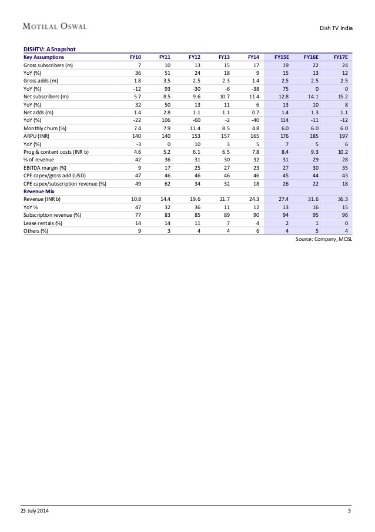
These costs are critical in determining a multi step income statement company’s profitability and pricing strategies. Business costs are classified into various categories, such as fixed costs (unchanging irrespective of production levels) and variable costs (changing based on production volume). The way cash traps work in debt financing is that when the borrower fails to meet certain covenants, cash flow generated from the collateral asset will be paid into a separate account operated by a third party agent.
Anytime there are more than two or three active competitors in a given productmarket segment, then someone is making a mistake. The leader may be failing to compete by holding an umbrella over higher cost competition at his own expense. A liquidity trap is a contradictory situation in which interest rates are very low but savings are high. In other words, consumers and businesses are holding onto their cash even with the incentive of interest rates at or close to 0%. Governments sometimes buy or sell bonds to affect interest rates, but buying bonds in such a negative environment does little, as investors are all too eager to sell them. It becomes difficult to push yields up or down, and harder yet to induce consumers to take advantage of the new rate.

Efficient working capital management is essential to prevent falling into a cash trap. Striking the right balance between accounts receivable, inventory, and accounts payable ensures a steady cash flow. In theory, a liquidity trap is thought to greatly limit the effectiveness of expansionary monetary policy, as interest rates are already at zero. Alternative tools like quantitative easing and a negative interest policy, however, have been shown to be effective. If investors are still interested in holding or purchasing bonds at times when interest rates are low, even approaching zero percent, the situation does not qualify as a liquidity trap. The only advantage of a growth product is that share can be shifted more rapidly from one competitor to another by preempting the share of the growth itself.
- Inflation of assets must be financed and will never be recovered in dividends or liquidation.
- Interest rates were set to 0% by Japan’s central bank but investing, consumption, and inflation all remained subdued for several years following the height of the crisis.
- Inflation alone requires financial growth to compensate for inflation in asset values as they turn over.
- This develops when the level of outstanding debt grows large enough that both borrowers and lenders become concerned that it may not be paid back in full.
- As of 2024, the U.S. economy is experiencing inflation and high interest rates.
International Business
Cash is rarely ever recovered from a cash trap unless relative competitive performance is improved by obtaining a superior market share. Fast growth products are even more dangerous cash traps than slow growth products. But growth alone does not improve relative cost or profit compared to competition. Yet the eventual payout depends on a superior cost compared to competition whose margin is just sufficient to finance growth needed to maintain inventory management methods their own market share.
Cash Trap in Accounting
When consumers are fearful, it is difficult to persuade them to spend rather than save. Banks can become reluctant to lend if they view the general credit landscape as high-risk. This develops when the level of outstanding debt grows large enough that both borrowers and lenders become concerned that it may not be paid back in full. Economists have suggested several reasons or precursors that can lead to one. This lack of interest in borrowing can show up across the economy, from business loans to mortgages and car loans.
Navigating the Legal Landscape: Cash Traps in Contracts and Key Takeaways
That would make bond prices fall, and make them a less attractive option. The effect, Keynes said, is to leave monetary policymakers powerless to stimulate growth by increasing the money supply or lowering the interest rate further. This refers to a business where whatever cash is generated is needed for maintaining its operations. Such businesses typically have low, if not negative, profitability and are sustained by resources allocated from the corporate level. Therefore, a business in a cash trap is not creating shareholder value and may actually be destroying it. Only the largest two or three competitors in any product-market segment can reasonably expect to avoid being a cash trap.
The spatial-structural development and growth of individual retail companies has been neglected in the growing retail literature. The Fed responded quickly with quantitative easing measures and increased liquidity and the crisis, if there was one, passed. The Nikkei 225, the main stock index in Japan, fell from a peak of over 38,000 in December 1989, and in early 2023 remains well below that peak. The index did hit a multi-year high above 29,000 in August 2022 before falling to around 27,500 just a month later.
A BIS working paper aptly titled „Does the Liquidity Trap Exist?“ showed that in the U.S., Japan, and the Eurozone, liquidity traps were easily managed through such alternative measures. When defined strictly, a liquidity trap renders central bank policies ineffective. The U.S. was thought to briefly experience a liquidity trap just following the 2008 financial crisis as interest rates fell effectively to zero while output also dropped. After the housing bubble burst, the banks were unwilling to lend and shocked investors parked their assets in cash. The belief in a future negative event is central to understanding liquidity traps.
This means investors still have time to capitalise on any appreciation in these two major asset classes. Balancing cash inflow and outflow is essential for maintaining liquidity. A well-managed how are selling expenses figured out monthly cash flow ensures that a company can meet its financial obligations, invest in expansion, and weather economic fluctuations.
Therefore, the majority of the products in the average company must be cash traps. This means that a majority of the products in the average company are not only worthless but a perpetual drain on corporate resources. The critical market share seems to be a level about twice that of the largest competitor. At about that point, debt capacity increases with market share even faster than the assets required. The cost level which can be achieved makes it possible to service debt equal to total net assets employed even though competition is selling at cost or below.
